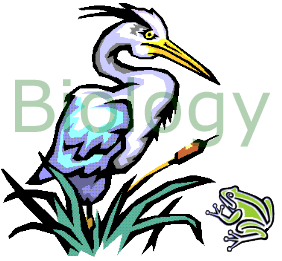Unit 1 The Science Lab
The five safety rules for working in
science are:
- use
of eye protection when you need to
- always
inform the teacher of breakage and spillage
- always
stand up while carrying out practical work
- behave
sensibly
- always
wash your hands after using chemicals
Safety rules are
needed in the science lab to protect you and the people around you. The Bunsen Burner

- Lighting
- Make sure the air hole is closed
- Light a splint
- Hold the lighted splint over the barrel
- Turn on the gas.
- Flames
- Yellow or
safety flame
- with the air hole closed
- this is the coolest of the flames
and easy to see
- Always leave the Bunsen on this
flame when you are not actually heating something.
- Blue flame
- hotter flame
- With the air hole half open.
- Purple flame
- hottest of the flames
- The air hole is fully open.
Hazard Symbols
 |
Flammable – it
burns |
 |
Toxic (poisonous)
– it can poison you |
 |
Explosive – it
can blow up |
 |
Corrosive – it
can cause chemical burns |
 |
Irritant
(causes redness and itching) and Harmful (will damage you in some other way), |
Equipment
|
Bunsen
burner |
Heating things |
|
Tripod
stand |
To put over a Bunsen
Burner to hold a beaker |
|
Heat
proof mat |
under the Bunsen,
protects the table |
|
Retort
stand |
A stand for holding
things (clamp stand) |
|
Beaker |
Glass container for
liquids (100, 250, 300 and 500 ml sizes |
|
Test
tube |
Smaller of the
tubes for holding liquids |
|
Boiling tube |
Bigger of the tubes for holding liquids |
|
Test
tube rack |
Metal holder for 6
test tubes and 5 boiling tubes |
|
Test
tube holder |
A metal device for
holding a hot test tube |
|
Dropper |
For dripping small amounts
of water. |
|
Spatula |
A scoop for lifting
chemicals |
|
Reagent
bottle |
A bottle with a lid for
holding liquid chemicals |
|
Tongs |
For picking up hot
things |
|
Thermometer |
To measure temperature |
|
Balance |
To measure mass |
|
Measuring
cylinder |
To measure volume |
|
Meter
stick |
To measure length |
Units
Length – how long, wide or tall something is
Mass – how heavy something is – its weight
Volume – how much space something takes up
Temperature – how hot or cold something is
Time – how long something takes
| ; |
Type |
Basic Unit |
Other units |
| ; |
Length |
metre (m) |
millimetre (1/1000), centimetre (1/100), kilometre (x
1000) |
| ; |
Mass |
grams |
milligram (1/1000), kilogram (x 1000) |
| ; |
Volume |
litre (l) |
millilitre (1/1000) |
| ; |
Temperature |
degrees Celsius (ºC) |
; |
| ; |
Time |
seconds (s) |
hours, days, weeks, and years |
Experiments
In
science we make observations:
- An
observation is something we can see, hear, feel, smell or measure using
instruments
- We use
our observations to design experiments
- An
experiment is something we do to test or investigate our observations.
Every
experiment needs:
Aim a
short description of what you are trying to find out.
Method how
you carried out the experiment.
Equipment
list the equipment you need to
do the experiment.
Results the
values you get from the experiment, usually in a table.
Conclusion what
you found out from the experiment. |


